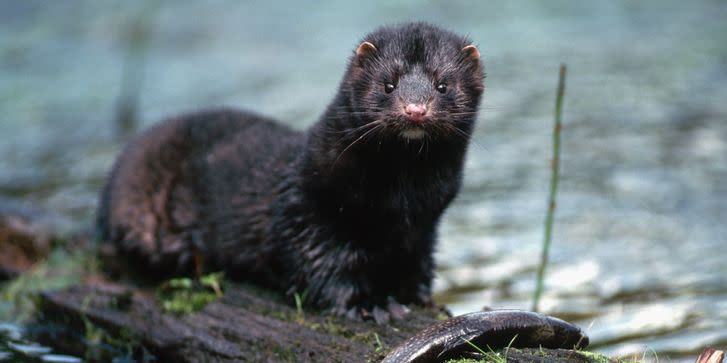Mink Can Un-Domesticate Their Brains

Researchers recently discovered that minks have regrown their brains post-domestication.
As animals are domesticated, their brain size usually shrinks. For a long time, this was thought to be pretty much permanent.
By studying minks, however, scientists have found that at least one creature can grown it’s brain back if left feral for long enough—though, we don’t yet know if those regrown brains match the original wild model in function.
The ability to domesticate animals has truly revolutionized civilization as a whole and humanity as a species. Not only has it made it possible to keep delightful little animal friends in our homes with us, but it opened the door to modern farming and agricultural practices.
Domestication is not just an attitude shift, though. It’s basically guided evolution, and it changes the creatures that undergo the process fundamentally—not always in a bad way, but change is definitely there. One of those changes is brain size. Domesticated animals have smaller brains than their wild counterparts, a phenomenon so universal that it’s actually called the domestication effect.
For a long time, we thought that effect was pretty much a one-way street—once you get domesticated, you can’t regrow that brain. But a recent study just announced that at least one animal seems to be able to challenge that idea. Over the course of 50 generations, brain size in a feral population of once-domesticated American minks has almost completely returned to what it was pre-domestication.
“Our results show that loss of brain size is not permanent in domesticated animals,” Ann-Kathrin Pohle, a Master's student at the Max Planck Institute of Animal Behavior and first author on the paper, said in a press release. “This finding deepens our understanding of how domestication has changed the brains of animals, and how these changes might be affecting animals when they return to the wild.”
This wasn’t an easy thing to figure out. In order to do this study in the first place, the species at its focus needed to have four key traits:
It needed to have been domesticated at some point.
It needed to have separate wild (never domesticated), feral (once-domesticated) and domesticated populations.
It’s brain size needed to be easily measurable.
It needed to be many in number to provide a substantial data set.
Luckily for the researchers, the mink checked all these boxes. Some were checked as the result of a history of being domesticated for the fur trade many years ago, and some were checked as a result of the mink just being the way it is. But regardless, it all came together.
Researchers were able to study the size of the animals’ brains by studying their skulls. “Braincase size is a good proxy for brain size in mink, and this allows us to take measurements from existing skull collections without the need for living animals,” Pohle said in a news release. And once the measurements were complete, the researchers were able to come to the conclusion that the brains of the feral minks had almost completely returned to their wild size, indicating that domestication can be undone.
While excited by their results, the researchers are quick to put caveats on their work. First, recovering brain size does not necessarily mean that they recovered identical brain function. Even with the bigger brains, feral minks may think totally differently than truly wild minks.
And second, this may not be applicable to every domesticated animal. In fact, Dina Dechmann—senior author on the paper and a group leader at the Max Planck Institute of Animal Behavior—believes that minks may have an advantage in what is known as known as Dehnel's phenomenon, the ability of some animals (like minks) to change their brain size seasonally.
“While other domesticated animals seem to lose brain size permanently, it’s possible that mink can regain their ancestral brain sizes because they have flexible brain size built into their system,” Dechmann said in a press release. “Animals with flexible brains, like the mink, could restore their brains even if they had shrunk it during an earlier time.”
There’s certainly more to be learned in the study of these mink brains that seem to be able to undo domestication. But, if nothing else, it seems that domestication doesn’t have the same guarantee of permanence that it once did.
You Might Also Like
